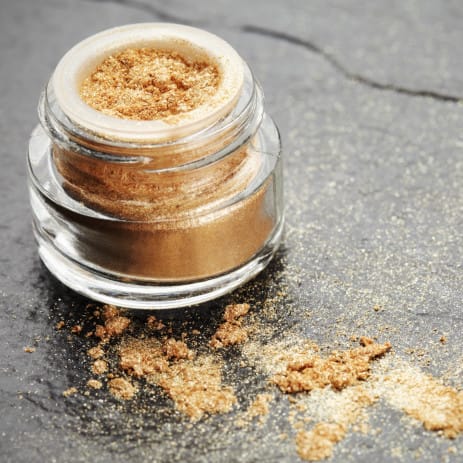5 things you should know about your make-up and the environment
How do our beauty regimes affect the environment? Here are five interesting facts everyone should know.


By ANNELIESE WILSON
The beauty industry rakes in several billion dollars a year and plays a much larger role in our day-to-day lives than many think.
According to a recent beauty survey, women on average use 12 beauty products per day and men use six. This may seem excessive, but if you add together moisturiser, foundation, lipstick, eyeliner, mascara, shampoo, conditioner, hair gel, facial cleanser, toner, body wash and deodorant, the products quickly add up.
The question is, how do our beauty regimes affect the environment? Here are five interesting facts that everyone should know about their beauty products and the environment.
1. One bottle of facial cleanser may contain up to 350,000 microbeads.
Microbeads are advertised as your exfoliation best friend, however they have been deemed more dangerous to the environment than a discarded bottle. The grains you feel when cleansing your skin are more often than not just tiny pieces of plastic.
At 0.5mm in diameter they are too small to be filtered from our sewerage systems and therefore end up in oceans and waterways. A wide range of reports on sites such as ecowatch.com estimate that one container of exfoliating scrub can contain more than 350,000 plastic microbeads. If that doesn't sound bad enough, it has been estimated 471 million microbeads hit San Francisco Bay every day.

Microbeads absorb one million times more toxic particles than water and can be eaten by marine life or absorbed into their skin. Not only is this unhealthy and potentially deadly, but microbeads then make their way back up the food chain to their original source – humans.
California recently passed a Bill banning the sale of products containing microbeads, but it won’t come into effect until 2020.
From an environmental perspective, it is advisable to avoid microbeads and look for "polyethylene" in the ingredients list of cosmetic products. There is also a Beat the Microbead app to help find a more natural exfoliant or cleanser.
2. Almost 13,000 chemicals are used in cosmetics, but only about 10 per cent have been evaluated for safety.
It’s easy to disregard the jargon on product packaging that tells you what you’re putting on your skin because it is widely assumed that each product has undergone rigorous safety tests.

However many people are surprised to learn how few ingredients have been officially evaluated. Cosmetics don't necessarily have to have government approval before coming on to the market, and that often means only minimal testing.
Even after testing, many harmful substances are able to be added in small amounts including parabens, a preservative found in cosmetics that has been linked to cancer.
Not only is it important to watch what we put on your skin, but also what we put back into nature. Chemicals have the capacity to negatively impact the environment. Like microbeads, harmful substances are often washed down the drain when you rinse, introducing them to aquatic ecosystems where they pose a poisoning risk to sea life.
3. Product packaging harms the environment
Packaging accounts for nearly one-third of the world’s landfill, with beauty and personal care products a major part of that. Cosmetic containers are manufactured strong to prevent the chemicals inside degrading the packaging. Sadly, once these bottles are empty they are thrown into landfill where they take hundreds of years to break down.
Some cosmetic brands, including Garnier, are now taking steps to reduce their contribution to landfill waste. By partnering with recycling company TerraCycle, they are working with consumers to recycle plastics into playgrounds, picnic tables and garden beds.
You can also do your bit by buying products with reusable or recyclable packing.
4. Animal Testing is still an issue in 2015

It seems archaic but animal testing is still prevalent in the beauty industry. Despite laws in Australia that prohibit animal testing for cosmetics, some multinational brands still fund inhumane testing overseas before their products reach our shelves.
Some of the biggest offenders are Palmolive, Colgate and Unilever.
Animal testing procedures include irritancy and toxicity tests that burn, blind and poison helpless test subjects.
There is no sound reason to continue animal testing. There are many well-researched materials that are already known to be safe and alternatives to animal testing including computer simulations.
You can find a list of cruelty-free products on the Choose Cruelty Free website.
5. Palm oil can be hidden
According to the World Wildlife Fund (WWF), 300 football fields of rainforest are destroyed every hour in the name of palm oil production.
This destruction of rainforest habitat has cause the decline of many species, putting the orangutan, Sumatran tiger and many other species on the fast track to extinction.
The best way to combat the issue is to avoid purchasing and supporting products that use palm oil. However, it’s not always that easy.

It’s rare to find a product that has “palm oil” written in the ingredients list. This is because palm oil can be classified under different names.
In order to help you become a smarter shopper, a detailed list can be found here.
Minimising your environmental footprint is not an impossible task, but you might not know about the damage you or your products are causing. If you want to join the green movement, it’s important to stay informed so you can make the right choices.





